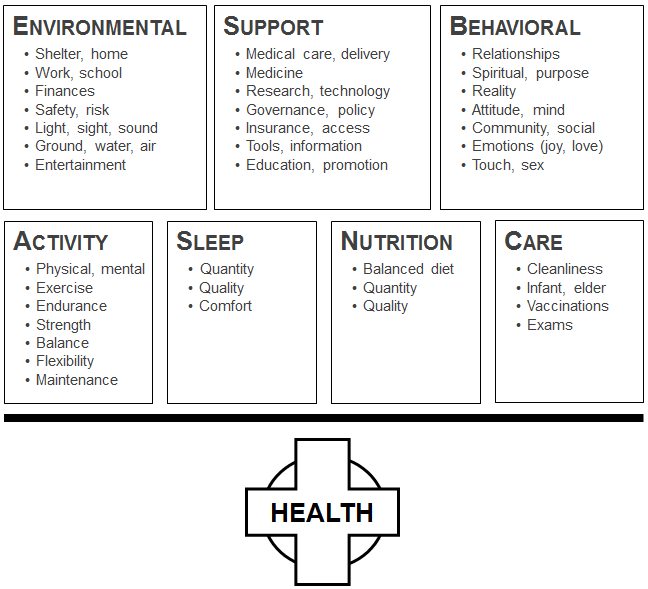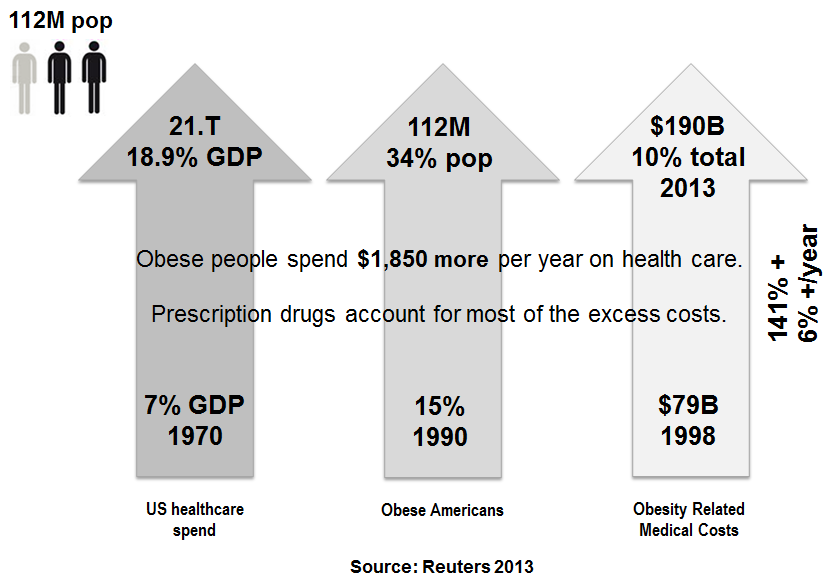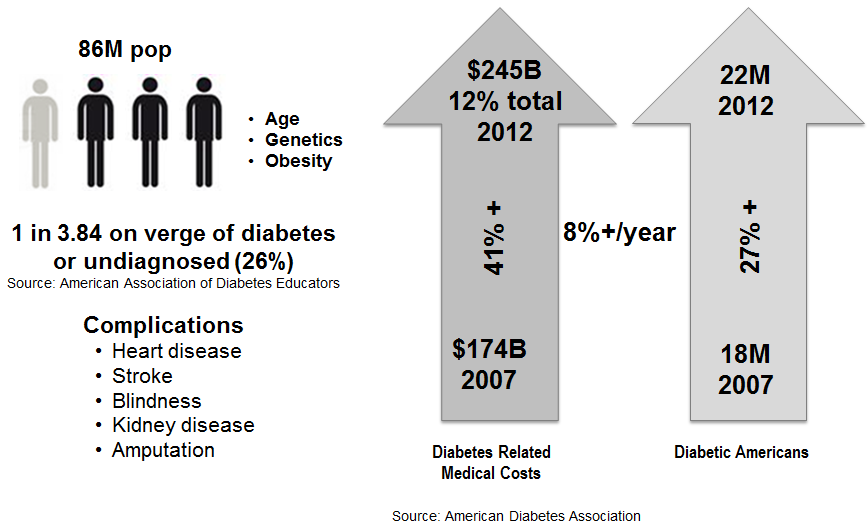We are what we eat, we are what we do, and we are what we accept … we are unhealthy.
If our health is so important to us and we, as Americans, spend $2.7 trillion dollars on healthcare annually, the question arises, “Why is our health worsening and the quality of care decreasing?” According to the CDC, obesity rises 6% annually and affects one third of the population. Diabetes rises 8% annually with about 26% of the population either undiagnosed or on the verge of diabetes. 75% of medical costs are due to Chronic Diseases and most of these can be managed through behavioral changes. Most people want better health care that is affordable and accessible but we do little to help ourselves stay healthy.
As people, we tend to focus on health when something has gone wrong and not only wrong, but very wrong. For most of us, health does not tend to be a priority in our lifestyles. Why is this? People tend to focus on social activities, material gain, family issues, jobs, or entertainment. Our daily living habits confirm this as we do not get enough sleep, do not get enough physical activity, and do not get the nutrition we need to remain healthy.
The trends of consumerism fueled new behaviors and we shifted our values over time. Convenience, cost, and speed now rule our behaviors since we are so used to getting fast food and products delivered in days as we rush trying to do too many things at once. We sacrificed quality for convenience since we are so used to taking the easy, convenient route. Most of us are strapped with debt and trying to manage a household on a tight budget so we are faced with a dilemma … should we pay $12 for GMO, food additive laden, processed food that is almost ready to eat once nuked to death or pay $32 for quality food products that you actually have to take the time to prepare and cook for yourself and the ones you love? It is usually the cheaper, easier option. The excuses are … “Don’t have the time”, “Can’t afford it”, “I can’t cook”, “I have more important things to do” and “That is too much effort”. We reprioritized how we perceive what is important to our lives and the sad news is health, as a priority, has been dropping steadily. We tricked ourselves into believing that good living is about quick, easy, convenient and cheap. We forgot how important we are and what it takes to keep us healthy to lead productive lives.
There simply are no short cuts to good health. Good health is not quick, easy, convenient and cheap. If your health deteriorates, you may find that repairing the damage is expensive, difficult, takes time, and is invasive to your lifestyle. Contrary to many TV commercials, there is no secret pill you can take to get the nutrients, sleep, and exercise required to maintain a healthy body and a healthy lifestyle. Partly to blame for this is the time lag of an action taken to the results exhibited. When we do something that is bad for our health, it usually takes a while to show up and since it takes a while, most of us do not see the gradual deterioration until a major event occurs … like a heart attack.
Most Americans actually take better care of their cars than they do their bodies … the oil gets changed and our cars fed with gasoline. I never heard of a person jamming a Twinkie down the gas tank. Why? Because we know it is bad for the car. BUT, why is it the same people do not see it may be bad for the body too? What can one Twinkie do? You do not really see the effects immediately but a daily habit will have an effect after time. 5,000 Twinkies later, you are 100 pounds overweight and combating diabetes. If you stop changing the oil in your car, eventually the engine stops running and it fails. So we know better. Admittedly, there are some of us humans that have not changed the oil in our cars, but not 1/3 of the population … but 1/3 of America is obese.
Summary
Health takes a back seat … until something goes horribly wrong. There must be a way to increase how we focus on health in our daily lives and adopt it as part of our lifestyle. Payers and Providers have been trying to figure out how to engage patients – members – consumers to manage their health better. One way is to understand them as consumers and the behaviors that drive them.
Excerpted from my book titled, “Commercializing Consumer Engagement.”


